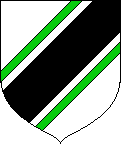Main Page: Difference between revisions
mNo edit summary |
(finally add new pages of the month... for the next year) |
||
| Line 35: | Line 35: | ||
</tr> |
</tr> |
||
<tr valign="top"><td style="background-color: #f8ffff; border: 2px solid #e2ffff; border-top: none; padding: 0.6em; padding-top: none;"> |
<tr valign="top"><td style="background-color: #f8ffff; border: 2px solid #e2ffff; border-top: none; padding: 0.6em; padding-top: none;"> |
||
[[Image:ostgardrsm.jpg|150px|right|A period drawing of an astrolabe]] |
|||
'''Edmund the Magnificant''': |
|||
'''Crown Province of Østgarðr''' : The Crown Province of [[Østgarðr]] encompasses the 5 boroughs of New York City (Manhattan, Brooklyn, the Bronx, Queens and Staten Island) as well as Nassau County and Westchester and Putnam counties. It is the original core of the [[East Kingdom]], forming when a number of [[SCA]] people moved east around 1968 and settled in New York. <small> ... [[Ostgardr|[more]]]</small> |
|||
Edmund, born 921[[CE]], (later named the Magnificent) was the son of [[Edward the Elder]] by his third wife, Edgiva. He first came to prominence at the age of 16, when he accompanied his elder half-brother, [[Athelstan]] to the [[battle of Brunanburgh]], against the [[Norse]] men of North [[England]]. Athelstan had [[becoming king|inherited]] the English [[throne]] in 924, and when he died in 939, Edmund became the first [[king]] to able to claim [[sovereign]]ty over "all" of modern England, being ruler of [[Mercia]], [[Wessex]], and [[Northumbria]] ... <small>[[Edmund the Magnificant|''(more)'']]</small> |
|||
</td> |
</td> |
||
<td></td> |
<td></td> |
||
<td style="background: #fff3ff; border: 2px solid #ffddff; border-top: none; padding: 0.6em; padding-top: none;"> |
<td style="background: #fff3ff; border: 2px solid #ffddff; border-top: none; padding: 0.6em; padding-top: none;"> |
||
'''Heraldic jargon: ''' |
'''Heraldic jargon: ''' [[Image:Bendsinistercotised.PNG|right|150px]] In [[heraldry]], an [[ordinary]] which is [[cotised]] has a narrow line, or cotise, running parallel to its edges. |
||
In [[heraldry]], '''chief''' refers both to the topmost position of the shield and the [[ordinary]] that takes that position. |
|||
'''Dance:''' [[ |
'''Dance:''' [[Contentezza_d'Amore_(Il_Ballarino)]] |
||
'''Fibre arts:''' [[ |
'''Fibre arts:''' [[Double face weave]] |
||
'''Recipe:''' [[ |
'''Recipe:''' [[Blaunche_escrepes_(recipe)|Blaunche_escrepes]] |
||
<small>[[Cunnan:Page of the Month|More details on the Page of the Month.]]</small> |
<small>[[Cunnan:Page of the Month|More details on the Page of the Month.]]</small> |
||
Revision as of 19:58, 24 July 2009
Welcome to Cunnan, a Wiki collecting information for re-enactors of the Middle Ages and Renaissance with a heavy slant towards members of the SCA.
Cunnan is believed to be the largest SCA-related wiki in the world but anyone can edit our articles. You should be bold in updating pages! Articles can only be improved if people are contributing new information and improving old information. So add research information, how-to pages, event information and anything else you can think of. Cunnan should be applicable worldwide, so be mindful of regional differences - use comments such as "In Lochac...". If you see anything that is different in your area, add a note on your local variation.
| December 13: | Cunnan now has more than 4,205 articles! |
| July 12: | Cunnan's software has been upgraded. If anything is broken you should leave a note at the Village pump. |
| Page of the Month | Other Features | |
|---|---|---|
|
Edmund the Magnificant: Edmund, born 921CE, (later named the Magnificent) was the son of Edward the Elder by his third wife, Edgiva. He first came to prominence at the age of 16, when he accompanied his elder half-brother, Athelstan to the battle of Brunanburgh, against the Norse men of North England. Athelstan had inherited the English throne in 924, and when he died in 939, Edmund became the first king to able to claim sovereignty over "all" of modern England, being ruler of Mercia, Wessex, and Northumbria ... (more) |
Heraldic jargon: In heraldry, an ordinary which is cotised has a narrow line, or cotise, running parallel to its edges.
Dance: Contentezza_d'Amore_(Il_Ballarino) Fibre arts: Double face weave Recipe: Blaunche_escrepes |
